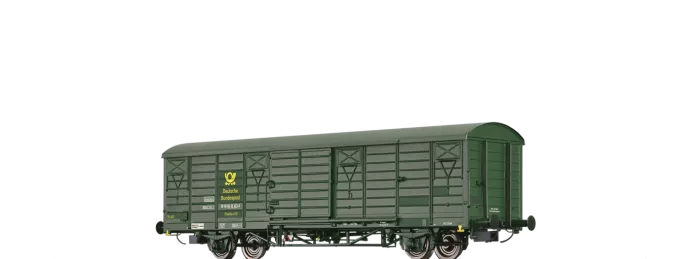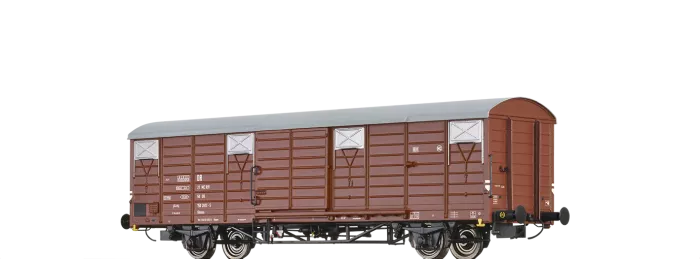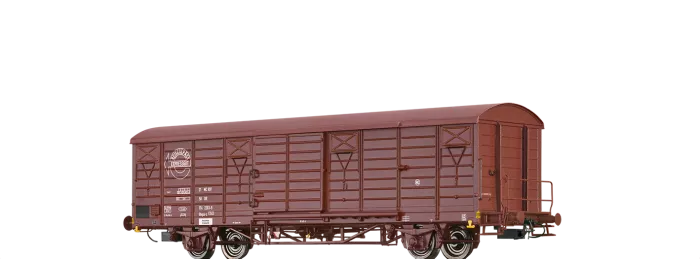
Covered Freight Car Gbs "sersa" DR
Road no.: 23 50 155 9910-5 [P]
Model details
- Metal wheels
- Individually mounted signal holder
- Individually mounted axle box cover
- NEM-standard short-coupling
- Metal axle bearing
- Multi-part brake system
- Brake shoes in wheel plane
- True to original car bottom
sersa is a registered trademark.
Downloads
Info about the original
Freight cars have always been required on the railways, now as in the past. The Deutsche Reichsbahn (DR) was able to provide a short-term remedy in the 1950s through retrofitting and modernisation, but it was clear that other solutions would have to be found in the long-term. As a result, in 1965 the Leipzig RAW “unit” designed a Glmms car which complied substantially with the standard characteristics of the UIC leaflet. The lessons learned from the test locomotives were incorporated in the series wagon produced from 1968, which was now known as Glmms 14.05 (later Gbs 1500). The design, with its distinctive corrugated side panels, came into being as a fully welded structure. The side panels were moved down onto the lower edge of the external bodysolebar and welded to the box profiles. This allowed for simplified side body supports. In order to prevent damage to the sheet metal walls during loading, the wagons were lined internally with wood. The floor consisted of standard pine planks and was suitable for loading with a forklift. Based on the Gbs 1500 design, of which over 1700 units were manufactured, a number of different versions were produced, including insulated boxcars, express goods wagons and vestibule cars. Since production capacity was almost exhausted at domestic facilities, wagons were also constructed in neighbouring countries and even Spain. Due to their RIV, MC and OPW transport suitability, the wagons could be used with relative freedom outside the DDR and were therefore often seen in Bundesbahn trains even before the fall of the Iron Curtain. However, until DB AG was founded, there were still as many as 7,000 wagons in use.


![49935 - Gedeckter Güterwagen Gbs§[1500]§ "Filmfabrik Wolfen" DR](/fileadmin/user_upload/produkte/webp/mobil_700/49935.webp)
![49934 - Gedeckter Güterwagen Gbs§[1500]§ "Leuna" DR](/fileadmin/user_upload/produkte/webp/mobil_700/49934.webp)
![49933 - Gedeckter Güterwagen Gbs [1500] "ORWO" DR](/fileadmin/user_upload/produkte/webp/mobil_700/49933.webp)
![49932 - Gedeckter Güterwagen Gbs§[1500]§ "Robur" DR](/fileadmin/user_upload/produkte/webp/mobil_700/49932.webp)
![49931 - Gedeckter Güterwagen Gbs§[1500]§ "Konsum" DR](/fileadmin/user_upload/produkte/webp/mobil_700/49931.webp)
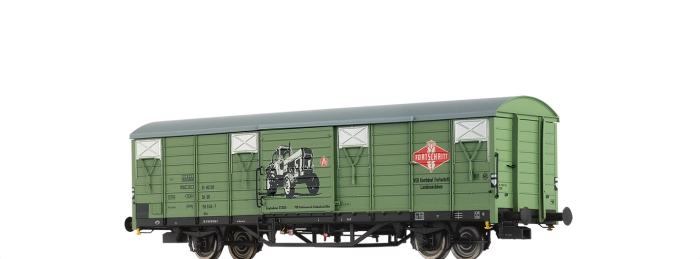
![49929 - Gedeckter Güterwagen Gbs§[1500]§ "Malimo" DR](/fileadmin/user_upload/produkte/webp/mobil_700/49929.webp)
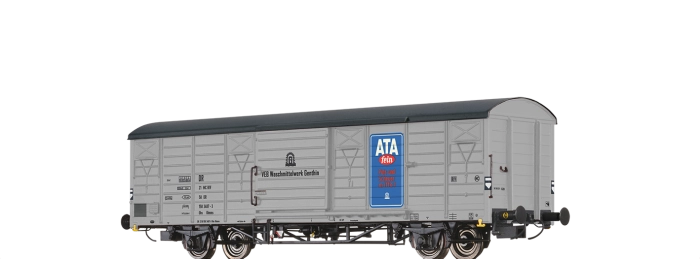
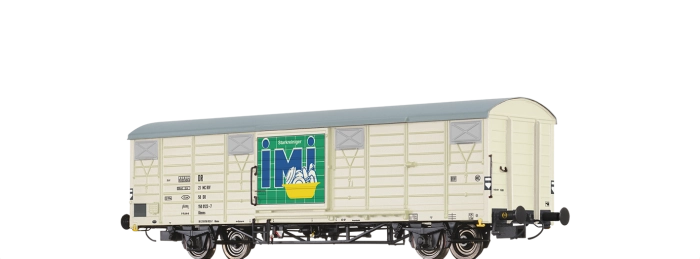
![49926 - Gedeckter Güterwagen Gbs§[1500]§ "IFA" DR](/fileadmin/user_upload/produkte/webp/mobil_700/49926.webp)
![49925 - Gedeckter Güterwagen Gbs§[1500]§ "IFA" DR](/fileadmin/user_upload/produkte/webp/mobil_700/49925.webp)
